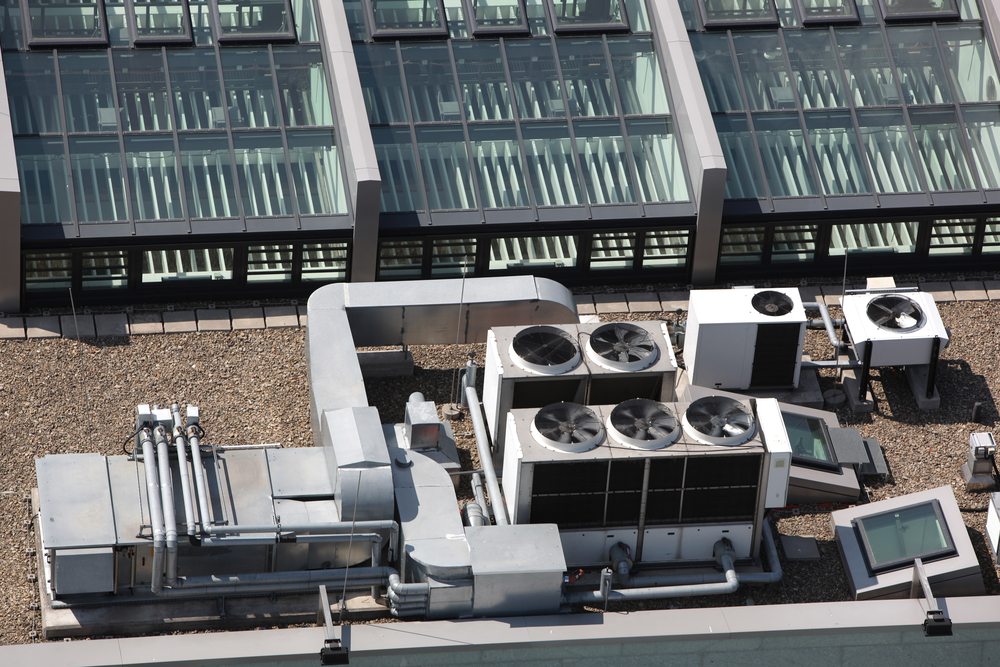HVAC sector warms up
The region’s construction markets, to which the HVAC sector is irrevocably tied, expects to see 9% average annual growth till 2015, a report by The Big 5 and Zawya has found

With temperatures shooting up to 50 degrees Celsius in the Arabian Gulf during peak summer, the heating, ventilation and air conditioning (HVAC) industry plays a critical role in the region’s construction sector.
Maintaining optimum comfort levels in terms of temperature, air quality and humidity may be essential, but the HVAC industry is strongly tied to the construction industry, which has seen strong growth in the early years of the century but has petered out since 2008. With signs of recovery on the horizon, construction appears to be on the growth path once again.
“We see annual growth in the region’s construction markets of 9% from 2011 to 2015 with Saudi Arabia, Oman, and Kuwait growing at 10%-plus annually,” Andrew DeGuire, vice president of strategy and acquisitions at Johnson Controls, told Zawya.
“The UAE is forecast to be strong with the commercial construction market going forward with 8% annual growth from 2011 to 2015,” he said.
Overall, the HVAC industry in the GCC has weathered the economic downturn much better than most developed markets around the world and seen average annual growth in expenditures of 12% from 2008 to 2011, according to DeGuire.
“We see this market growing annually by 8% from 2011 to 2015. The UAE has not fared quite as well as the rest of the GCC but has still had solid growth compared to the global HVAC market. We see the UAE HVAC market growing by 3% from 2011 to 2015,” he said.
| According to research from the Building Services Research and Information Association, a UK-based testing, instrumentation, research and consultancy organization, the HVAC will grow by 6% in Qatar and 10% Saudi Arabia annually from 2011 to 2015.Estimated Size of Air Conditioning Market (2011)
|
|||
| GCC (including UAE) | UAE | ||
| Residential | $1,562m | Residential | $320m |
| Commercial | $1,301m | Commercial | $410m |
| TOTAL | $2,863m | TOTAL | $730m |
| Source: Johnson Controls | |||
Market players
Although industry numbers are hard to come by, there are literally thousands of players in the region’s HVAC market, according to George Berbari, chief executive of DC Pro Engineering.
“The international players from China and Korea dominate the residential decorative split market. The Japanese, Korean and Chinese players dominate the variable refrigerant flow (VRF) market, while the Saudi manufacturers dominate the window A/C and the package A/C market. The Americans dominate the chiller market for large projects and district cooling plants,” Berbari told Zawya.
DeGuire added that the top four global manufacturers – Johnson Controls, Trane, Daikin McQuay, and United Technologies-Carrier Corp. – represent more than 80% of the commercial market. Local players, such as Zamil, Golden Star and SKM, represent the balance of the market.
“In the residential market, there are substantially more players, including manufacturers from Asia, Europe, America, as well as local players from the region,” DeGuire said.
Zawya independent research revealed that the list includes Mitsubishi, Carrier, LG, Aftron, Samsung, Voltas, Sinco and others as the leading players in the residential segment.
Technologies and innovation
The HVAC industry is seeing innovation in fields such as air conditioner equipment, building systems integration and building automation and energy management, DeGuire said.
“We have seen new compressor developments that drastically improve an air conditioner’s energy efficiency and cooling capability, which is very important given the Middle East’s harsh conditions and substantial cooling needs,” he said.
Other changes include integration of the various systems present in a building (HVAC, security, fire alarms, communications, internet, etc.), which helps save construction costs and allows efficient facilities management. Also, control systems are adopting cloud-computing strategies to offer flexible and accessible monitoring and operations of buildings.
An important trend in 2012 is the wider acceptance of VRF systems, particularly in local villa projects in Abu Dhabi as well as the ECM fan coil units in hotels and high-end projects due to their higher efficiencies, low noise and communications, Berbari said.
A recent industry report from the building technologies practice of international research and consultancy firm Frost & Sullivan added: “VRF systems are likely to be a major segment of the HVACR market in the immediate to mid-term future due to the introduction of digital scroll and inverter technology”, and that “the HVAC industry [is] shifting its focus to advanced/ sustainable air conditioning systems from simple/ traditional air conditioning systems”.
Positive Middle East sector
In 2011, the global market for air conditioning was valued at USD 88.2 billion, up 13% compared with USD 78 billion in 2010, BSRIA told Zawya in an emailed statement.
“The evidence is that the global A/C market is continuing to recover lost ground since the downturn in 2009. Market conditions in the Middle East, Africa and the Indian subcontinent continue to remain positive,” it said.
“Overall though, some countries such as the UAE were impacted by the financial crisis. India and Saudi Arabia are the most important markets of the region. Qatar is also an important market with opportunities once the government has made its announcement regarding the Football World Cup 2022 due mid-2012,” BSRIA added in its latest report on the global air conditioning industry released in April 2012.
“The rooftop market can be considered one of the most important across all the A/C markets in the Middle East, such as Saudi Arabia, whose sales account for about the 22% of the total market in the region. Here, the units are installed in residential buildings as they can be installed and maintained from outside without access to the inside of the house. Larger capacity units up to 350kW are also installed in substations such as in Qatar.
“On the other hand, large packaged units are used for commercial applications including banks, mosques and churches, warehouses, showrooms, supermarkets, factories and low-rise buildings. The indoor packaged market decreased in 2011, down 4% over 2010 by volume and up 1% by value,” the report said.
Environment and regulation
Air-conditioning is seen as detrimental by environmental experts concerned about carbon emissions and energy-efficiency advocates, although the industry is matching the green requests with corresponding changes in products.
“Air-conditioning consumes almost two-thirds of the electricity in a building. Based on a global warming survey, buildings accounted for 39% of total energy use, 68% of total electricity use and 38% of carbon dioxide emissions,” according to Frost & Sullivan research.
“Increasing energy consumption, growing awareness of energy efficiency and sustainability is leading to the transformation of efficient air conditioning technologies, which use natural sources of energy that saves power and maintenance costs compared to traditional HVAC,” it said.
According to a forecast by the Economist Intelligence Unit, electricity consumption in the GCC is expected to be 661.85 billion kilowatt hours (kWh) by 2020, and the per capita consumption of electricity is expected to be 12,201 kWh in 2020 from 9,307 kWh in 2010.
Energy consumption in air conditioning can be reduced through continuous research and development practices and improved energy-efficient technologies involving low cost and higher returns. However, a relatively high initial investment for sustainable products and the gaining prominence of district cooling pose a major challenge affecting the growth of this market.
An efficient HVAC unit can reduce a building’s energy consumption by 35% to 40%. A growing number of regulations are being implemented in the GCC and bodies like the Emirates Authority for Standardization & Metrology (ESMA) and the Saudi Arabian Standards Organization have adopted AHRI (Air Conditioning, Heating and Refrigeration Institute) and ASHRAE (American Society of Heating, Refrigeration, and Air Conditioning Engineers) standards to stay in line with international trends.
The region is also seeing a greater acceptance of the Leadership in Energy and Environment Design (LEED) rating system, development of local building codes such as the Pearl ratings from Estidama (Abu Dhabi) and the formation of the Emirates Green Building Council in the UAE.
In May 2011, ESMA announced that the UAE is in the process of restricting the entry of inefficient air conditioning units and has begun rolling out an energy efficiency labeling system for window type and split-system air conditioners.
Through a series of initiatives that calls for more efficient and energy-saving air conditioners, the UAE expects to cut 30% of its electricity consumption to save approximately AED 250 million (USD 68 million) per year.
Beginning January 2012, no air-conditioning unit will be allowed entry to the UAE unless they comply with the new regulations. By 2014, the standard will include chiller systems, which are used widely by the commercial and industrial sectors.

























